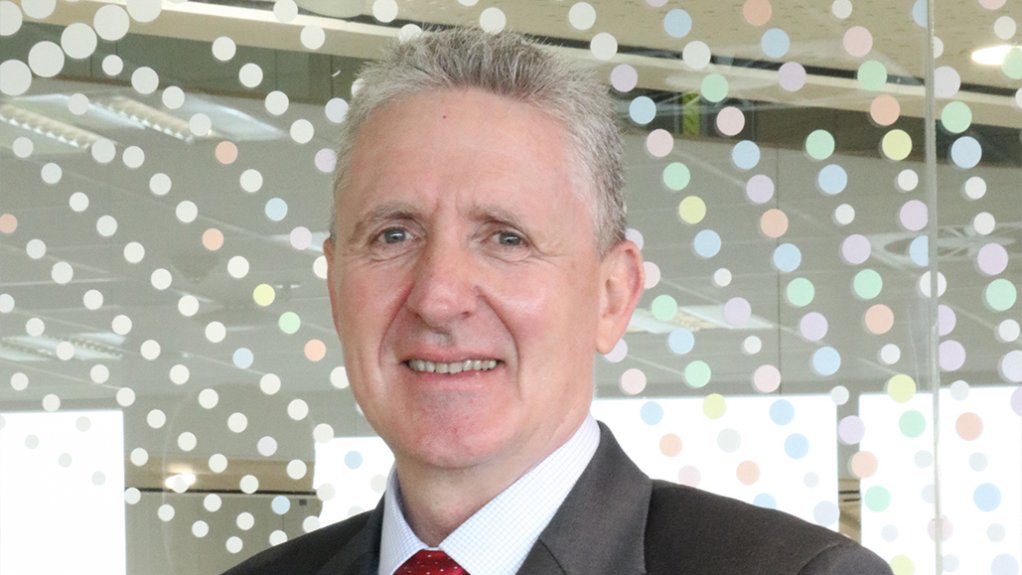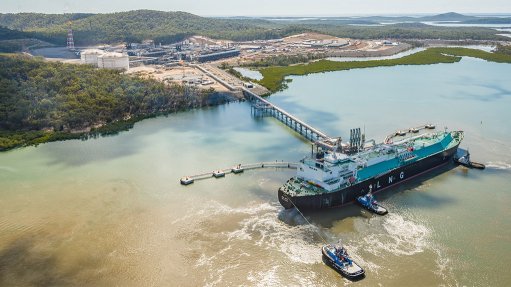How we can advance SA’s just transition in 2022


PAUL O’FLAHERTY This energy transition must start by exponentially increasing generation from South Africa’s renewable sources of energy
The transition to a low or net-zero carbon economy is here. The United Nations Climate Change Conference of the Parties (COP26) in Glasgow last November called for rapid action to meet the goals of the Paris Agreement. This means substantially reducing global greenhouse-gas emissions to limit theglobal temperature increasein this century to not more than 2 °C above preindustrial levels, states strategy consulting organisation EY-Parthenon Africa leader Paul O’Flaherty.
O’Flaherty highlights two points. The first is that transitioning to a low-carbon economy will not happen overnight; the second is that the transition must come in the form of a “just transition” – one that secures the future and livelihoods of affected workers and their communities and includes dialogue between workers and their unions, employers, government and communities.
“EY’s ‘2022 Geostrategic Outlook’ report highlights ‘climate change and sustainability’ as one of three main themes for the coming year. A key development that business should track is the nexus between climate change and political risk, as governments look to mitigate climate change impacts and speed up the energy transition, while also figuring out how to pay for it.”
O’Flaherty stresses that achieving this transition will not only have a fundamental and lasting impact on South Africa’s mining and energy sector, it will affect every aspect of the lives of South Africans, from transport systems to the built environment and beyond.
He adds that South Africa’s economy is largely supported by mining, which accounts for 8.2% of gross domestic product and is on the rise again, and a coal-based power system, which provides 87% of South Africa’s power.
“We also have unemployment numbers hovering around 35%, so we’re going to think very carefully about how we conduct this just transition.”
He argues that this transition must start by exponentially increasing generation from South Africa’s renewable sources of energy, leading as many people as possible out of the old coal-based economy into the new renewables-based economy, and by supporting the businesses that will close as much as those industries that are opening or transforming.
A major part of the transformation will be the country’s ability to unleash a decentralised energy generation system. Here, the ability for independent power producers and large industries to generate 100 MW of their own power will be key.
O’Flaherty does, however, note that there are challenges. While renewable-energy sources are the lowest cost energy generation option available right now, these projects will have to be built in collaboration with South Africa’s existing coal-based value chain.
This value chain includes unions, communities, mines, coal transporters, and a host of associated formal and informal manufacturing and service sectors.
“The added pressure is to design South Africa’s energy transition in a way that maximises growth and job creation. Here, the very nature of renewable generation assets offer a pointer, as they are often concentrated in rural areas in sites far from the power grid. This provides an opportunity to create jobs, skills and opportunities by developing renewable-energy projects in some of the country’s most economically marginalised areas. Similarly, mines can reskill existing workers to support their own power generation initiatives.”
O’Flaherty points out that South Africa has competent individuals defining and monitoring the implementation of the just transition, in the form of multistakeholder body the Presidential Climate Commission.
“I recently spoke to Presidential Climate Commission executive director Crispian Olver, who says the commission is working rapidly to establish a framework with policy instruments that ensure the transition is procedurally and substantively just. It is critical that business works closely with the commission to drive the transition.”
O’Flaherty states that the transformation is already under way in the mining and energy sectors, where many of the country’s large, high emitters are signing up to net-zero targets.
They are actively adapting their operations through better processes, electrification, and a move to renewables, including hydrogen. In most cases, the target date is 2050, although there are a couple of notable exceptions, such as diversified miner Anglo American, which has committed to a zero emissions date of 2040.
At the same time, the commission and State-owned power utility Eskom are looking at repowering and repurposing decommissioned coal stations and mines with renewable-energy and storage solutions, or switching their fuel sources to gas or hydrogen.
Repurposing proposals range from training facilities to agricultural activities.
He points out that the general consensus is that it will be better for the country to take underperforming coal stations off the grid sooner rather than later, and use the money saved to accept a greater level of renewable power from solar and wind farms.
“What can businesses do? EY’s 2022 Geostrategic Outlook has five recommended actions for boards and executives. One, examine your company’s footprint and business models, from supply chains to distribution networks, to find opportunities to reduce carbon emissions and increase revenue. Two, take advantage of relevant sustainability incentives like tax allowances and cash grants. Three, assess the impact of carbon taxes on global operations to understand exposure and ensure compliance.”
The fourth action is to measure and report on sustainability metrics while committing to transparency, and the fifth is to engage with policymakers to contribute to the development of new policies and standards.
The goal is to get every business transitioning, he adds, and to support local renewables and green businesses, entrepreneurs and communities to offset emissions and to expand the energy sector faster.
“It seems obvious that the mining sector should be collaborating with these businesses, and looking for ways to bake green energy initiatives and investments into their business strategy. The bottom line is that South Africa’s transition is going to work because it makes economic sense. There’s no doubt that much work and discomfort lie ahead. But there is also tremendous the promise of new technology, new skills and much needed jobs,” he concludes.
Comments
Press Office
Announcements
What's On
Subscribe to improve your user experience...
Option 1 (equivalent of R125 a month):
Receive a weekly copy of Creamer Media's Engineering News & Mining Weekly magazine
(print copy for those in South Africa and e-magazine for those outside of South Africa)
Receive daily email newsletters
Access to full search results
Access archive of magazine back copies
Access to Projects in Progress
Access to ONE Research Report of your choice in PDF format
Option 2 (equivalent of R375 a month):
All benefits from Option 1
PLUS
Access to Creamer Media's Research Channel Africa for ALL Research Reports, in PDF format, on various industrial and mining sectors
including Electricity; Water; Energy Transition; Hydrogen; Roads, Rail and Ports; Coal; Gold; Platinum; Battery Metals; etc.
Already a subscriber?
Forgotten your password?
Receive weekly copy of Creamer Media's Engineering News & Mining Weekly magazine (print copy for those in South Africa and e-magazine for those outside of South Africa)
➕
Recieve daily email newsletters
➕
Access to full search results
➕
Access archive of magazine back copies
➕
Access to Projects in Progress
➕
Access to ONE Research Report of your choice in PDF format
RESEARCH CHANNEL AFRICA
R4500 (equivalent of R375 a month)
SUBSCRIBEAll benefits from Option 1
➕
Access to Creamer Media's Research Channel Africa for ALL Research Reports on various industrial and mining sectors, in PDF format, including on:
Electricity
➕
Water
➕
Energy Transition
➕
Hydrogen
➕
Roads, Rail and Ports
➕
Coal
➕
Gold
➕
Platinum
➕
Battery Metals
➕
etc.
Receive all benefits from Option 1 or Option 2 delivered to numerous people at your company
➕
Multiple User names and Passwords for simultaneous log-ins
➕
Intranet integration access to all in your organisation



















